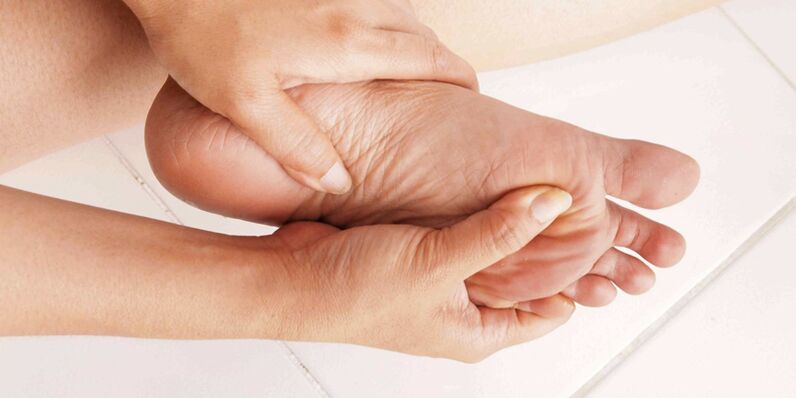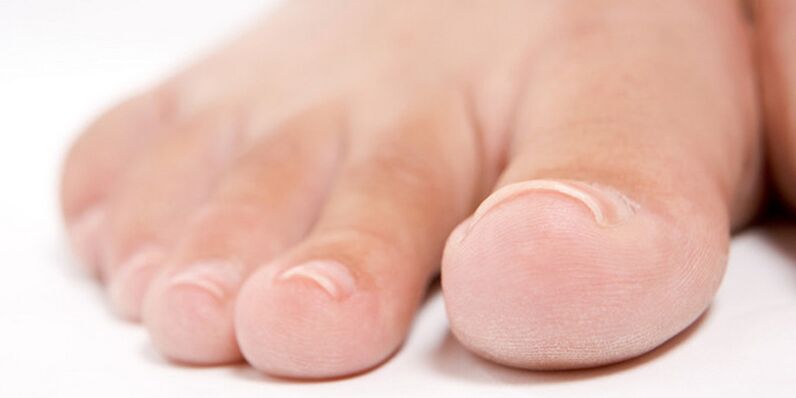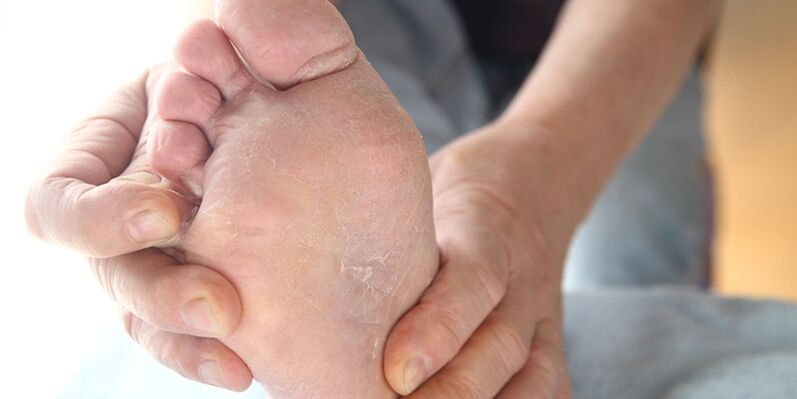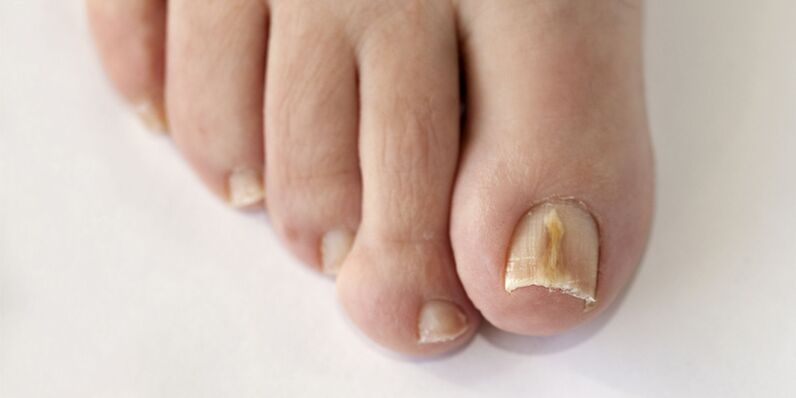
One of the most unpleasant diseases that appears suddenly and causes a lot of trouble is onychomycosis. Some treat it for years, others - only a few months. Why is she? This is because there is an important rule: if the symptoms of nail fungus are detected at an early stage, your time for treatment will be significantly reduced.
Unfortunately, not everyone is able to recognize it immediately after infection. Fungal spores "fill" the territory of human skin gradually, so you should pay attention to the smallest suspicious changes in the skin and nails, so as not to miss the first signs of this disease.

Causes and signs of foot fungal infection
Few people examine their feet meticulously every day. Often, not everyone can recognize toenail fungus, as different types of spores can live on the surface of the skin for a long time while not appearing in any way. For example, fungi of the genus Candida are normally present on every person's feet. We are talking about conditionally pathogenic flora, which, under certain unfavorable conditions, causes the development of the disease. What can serve as a stimulus for the emergence of a mushroom?
- Immune deficiency conditions (oncological diseases, congenital pathologies, autoimmune diseases, AIDS, hepatitis and others).
- Diabetes. The so-called diabetic foot is very often affected by fungi and bacteria due to impaired blood flow as well as the formation of ulcers and non-healing wounds.
- Hyperhidrosis or excessive sweating of the skin. Since nail fungus feels good in a humid and warm environment, it is not difficult to recognize it on the skin of a person suffering from excessive sweating.
- Endocrine disorders.
Onychomycosis is very easy to get infected, for example, in a swimming pool, sauna or gym. Fungal spores can settle on the skin where there are cracks, wounds and damage. It is important to diagnose the disease at the first manifestations, because the outcome of treatment depends directly on this. Conventionally, onychomycosis can be divided into several stages, each of which has a number of signs.
- Initial stage: the skin on the feet itches and flakes a little, the external manifestations of the fungus, as we are used to seeing in the picture, usually do not occur. You can feel extremely dry skin, nothing more.
- The next stage is characterized by the appearance of red spots or white plaques on the skin of the foot and between the toes. It all depends on the type of fungus that has touched your feet. The spots come in a variety of sizes and are usually well defined with scaly borders. The white coating resembles powder or flour.
- Further, fluid bubbles begin to form on the feet, they are unevenly distributed on the surface of the skin and explode over time. At the site of the blister, an ulcer forms, which does not heal for a long time.
- It is impossible to determine the fungus on the toenails in one of the last stages, because the changes in the nail plate often start after the appearance of itchy skin and ulcers. The nail thickens considerably. You can see how many flakes and free edge crumble. The color of the nail plate also varies: in yellow-green, brown or even black. It separates from the nail bed, exposing it.

Detected onychomycosis: what to do?
If you notice the above manifestations on the feet, you should immediately visit a dermatologist, a mycologist - a specialist in the study of fungi or a podiatrist (a doctor specializing in foot and nail problems). Undoubtedly, you will be prescribed an analysis for nail fungus in order to find out the type and degree of infection. Most often, onychomycosis occurs when the foot is affected by the fungus:
- Trichophytos,
- Dermatophytes,
- Spores of the genus Candida.
If the initial stage of nail fungus is characterized by only a few small marks and is localized to only one of the feet, as you can see in the picture, then you are in luck.

Most likely, the doctor will prescribe a standard treatment regimen with antifungal drugs that effectively kill the fungus.
For therapy, it is recommended to use special oils, creams, sprays and nail polishes.
Unfortunately, sometimes a person notices the appearance of toenail fungus when the initial stage has passed a long time ago.

From the photo, you can easily determine that the disease is developing: the marigold is deformed, peeled from the nail bed and changed its color, deep and painful cracks are formed between the toes, both feet are affected by the fungus. In such a situation, antibiotic therapy will help, as well as treatment with immunostimulatory and antiallergic drugs, and taking vitamins. You can supplement the complex therapy with traditional medicine prescriptions: herbal decoction bath, sea salt and soda, treatment with a vinegar solution, applications with garlic, pork fat and other ingredients.
In the most extreme case, marigold affected by onychomycosis is surgically removed or cut into the office of a pediatrician (podologist) using a special milling machine.
Now you know how the fungus manifests itself on the feet, the causes of its appearance and how to deal with it. We hope you find this information useful.

























